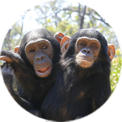Morphological Evolution in Real Time: Mindless or Mindfree?
Mark Aronoff
Stony Brook University
A growing stream of research over the last decade has shown the value of the Darwinian principle of competitive exclusion (Gause’s Law) for understanding the organization of systems far beyond biology, from the evolution of planets to human culture, including detailed aspects of the structure of languages. Thus, we can best understand the distribution of rival morphological realizations in terms of linguistically-defined ecological niches. For example, a number of suffixes in written English form abstract nouns from adjectives: -ness, -ity, -th, -ce. They are distributed in terms of morphological environments or niches, with each productive in a particular niche. Competitive exclusion also predicts that two or more realizations that begin as synonyms may become semantically distinctive, allowing both to flourish, as attested by word pairs like historic/historical or economic/economical. I will report on the English adjectival privative ‘suffix’ -free, which has become productive since the beginning of the 21st century. The niche for the newly emerging -free pattern is semantic, signaling an unusual speaker-oriented lexical implicature, roughly ‘it is good to be xfree’. Using novel computational and web-based methods, which are interesting in and of themselves, we will show that the proportion of Xfree words corresponding to Xless words has increased rapidly from 1/80 (listed in OED) to 2/3 (attested online). Competitive exclusion is design-free, in biology and everywhere else. it makes no prediction about the properties of a new entity, only that these properties must make that entity distinct. The novel meaning type of the -free pattern is easily accommodated within such a framework but makes little sense within a more traditional linguistic theory.







